The Kingdom of Tonga is known for its monarchs, including King Tupou VI, the current sovereign and sixth reigning royal since the constitutional monarchy was founded in 1875.
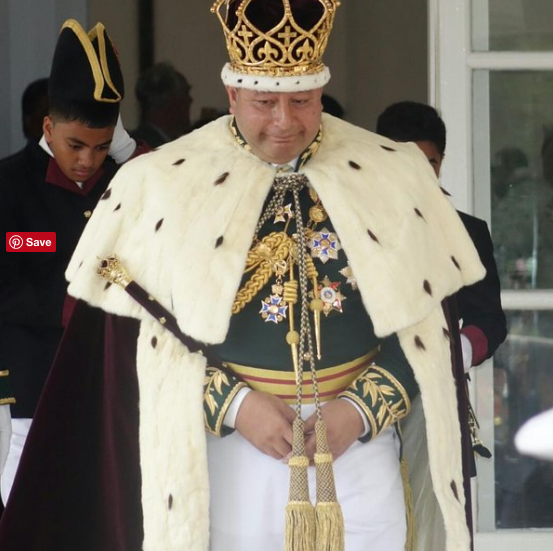
Queen Sālote Mafile‘o Pilolevu Tupou III is perhaps the most famous Tongan monarch of all. She was the first queen regnant and third monarch of the Kingdom of Tonga, an island nation in the South Pacific Ocean. Queen Sālote ruled nearly 48 years, from 1918 until her death in 1965, longer than any other Tongan monarch.
Queen Sālote brought Tonga to international attention when, during her only visit to Europe, she attended the 1953 coronation of Queen Elizabeth II in London.

During the coronation procession, it began to rain and hoods were placed on the carriages of dignitaries in the procession. Since Tongan custom dictates that one should not imitate the actions of the person being honored, she refused a hood and rode through the pouring rain in an open carriage, endearing herself to spectators along the parade route as she smiled and waved.
But long before modern Tongan kings and queens, there was another monarch that came to Tonga: the Monarch (Danaus plexippus) butterfly.
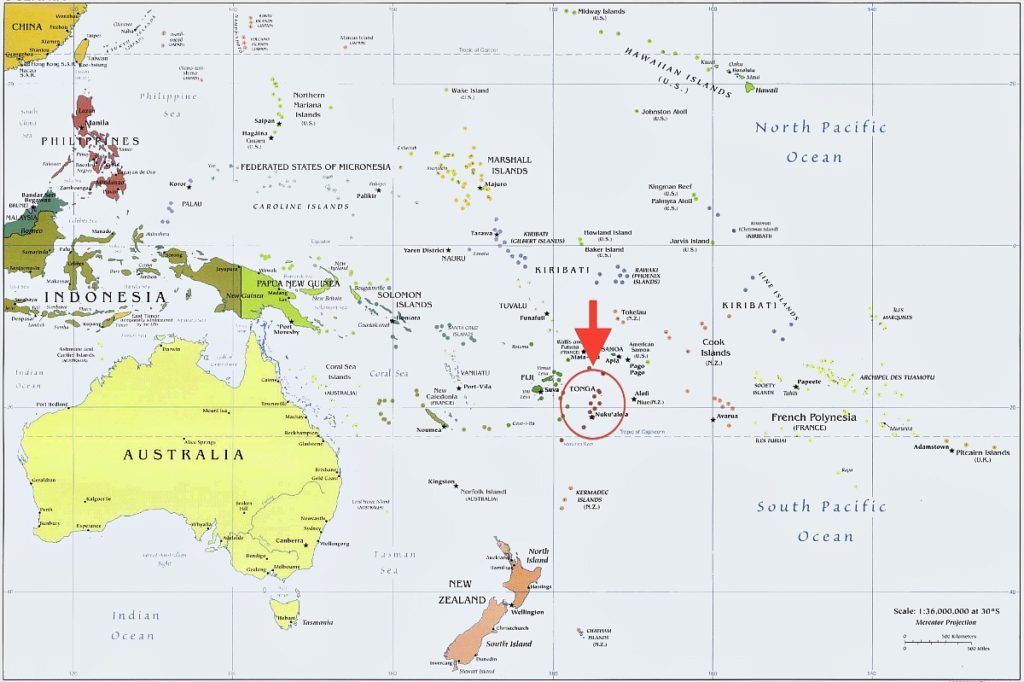
Monarch butterflies were first recorded in Tonga in 1863. It’s believed these butterflies flew or were blown thousands of miles to Hawai‘i from North America (or maybe they were serendipitously transported on ships, which seems more likely) and adapted to eat Crown Flower (Calotropis gigantea) leaves instead of leaves of Milkweeds (Asclepias spp.). They spread south through the islands of Polynesia to Tonga.
I started raising Monarch butterflies in Tonga in mid-June of this year when female Monarchs deposited eggs on Tropical Milkweed (Asclepias curassavica) that I’d planted in pots. After two weeks, I had so many caterpillars I knew that I would soon run out of Milkweed for them to eat.


While driving down a street near my home, and to my utter delight, I discovered the largest Crown Flower tree that I’ve ever seen. This beautiful plant is called Crown Flower because the purple flowers were favored by Hawai‘i’s last monarch, Queen Lili‘uokalani, who considered them a symbol of royalty and wore them strung into delicate leis.

Realizing that I’d found the mother lode of food for my caterpillars, I parked the car and walked to the gate where I called out “Mālō e lelei!” (“Hello!” in Tongan) to see if anyone was home. A five-year-old boy came to the fence. To my dismay, he didn’t speak any English. I pulled out a couple of Tongan pa‘anga (worth about 45 U.S. cents each) and pointed to the tree. He let me inside the yard and I walked over to the tree, cut some branches off and gave the boy the money. He smiled, then grinned, and exclaimed, “Mālō!” (“Thank you!”).
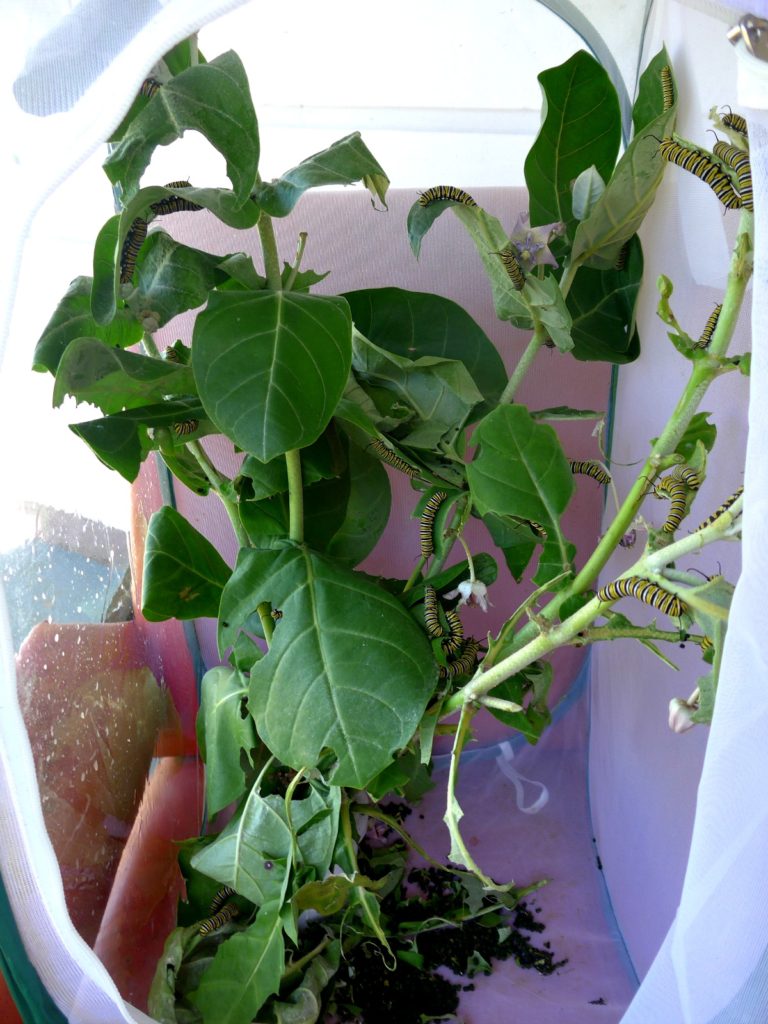
A few days later I returned, called out again, and the little boy came running to open the gate and let me inside the yard. He was more than willing to take a few more pa‘anga off my hands.
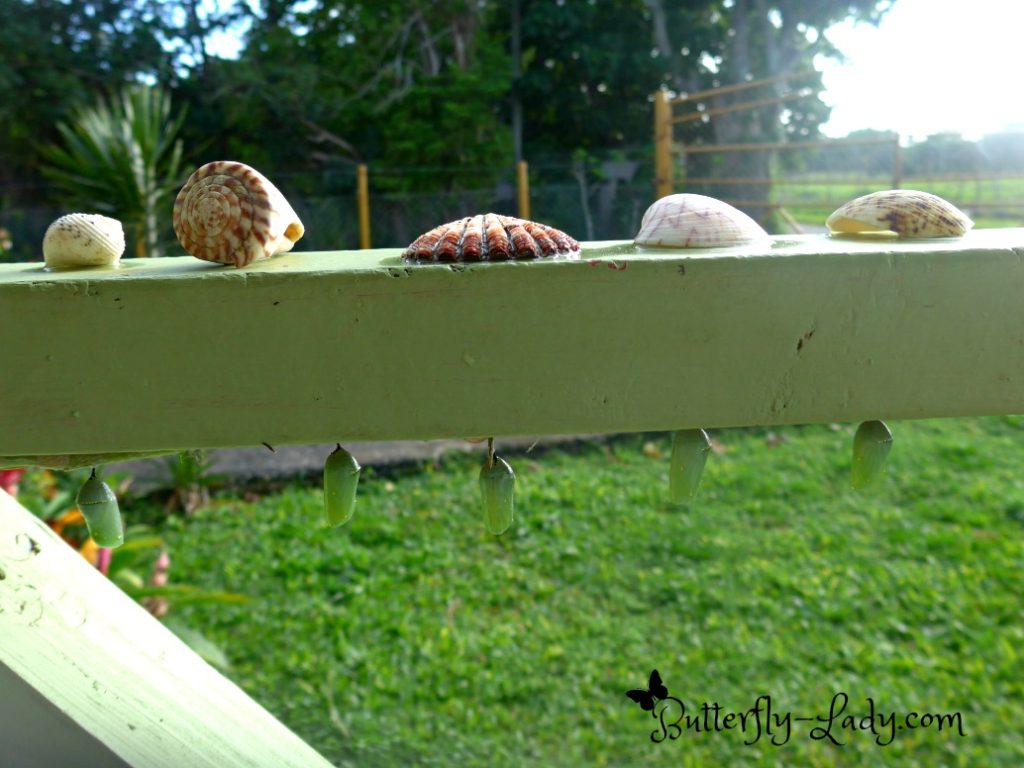
I was able to raise about 70 Monarch butterflies in that brood. Some pupae I hung on the underside of the railing on my porch; others I gave away to teachers, children, and friends. What joy to be rearing Monarchs again!
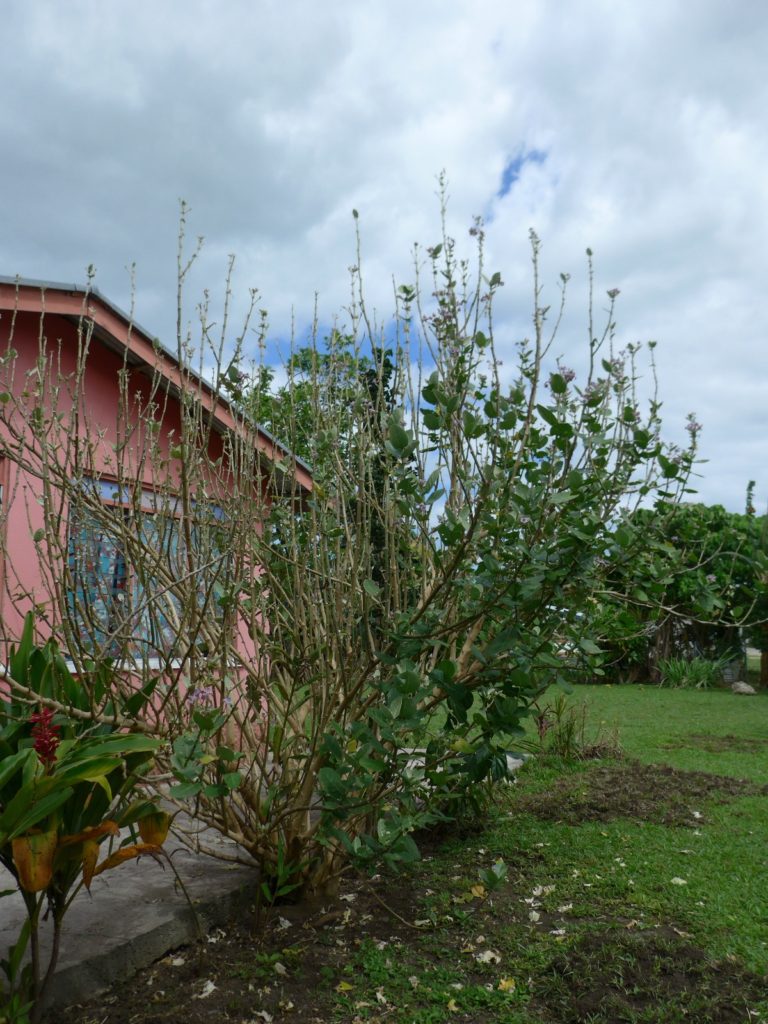
By August, I had not been back to the Giant Milkweed tree (another name for Crown Flower) since early-July. My husband and I had left Tonga for a month to visit family and friends abroad. Upon our return, the entire crop of Tropical Milkweed growing in pots on our front porch was completely gone and all of the dozens of chrysalises hanging from the railing had opened. There had been no sign of Monarch butterflies at our house since we returned.
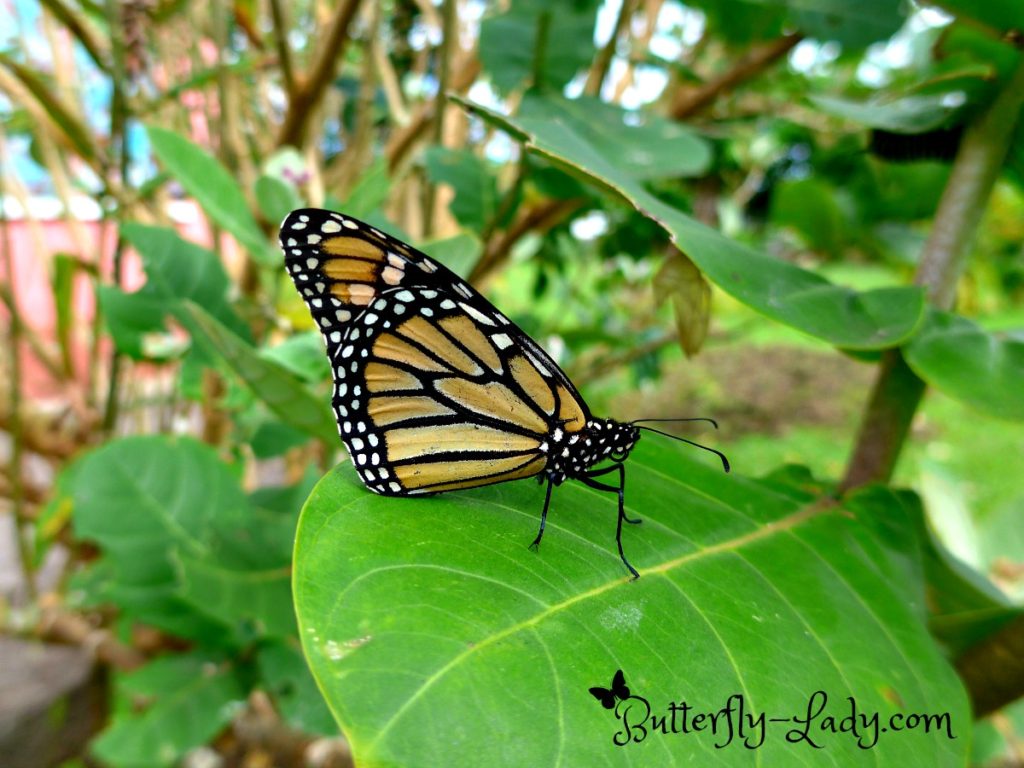
Yesterday, just out of curiosity, I drove by the giant Crown Flower tree and was stunned to see that many of the leaves were gone. I parked the car, walked to the gate and called out, but no one answered. The next-door neighbor informed me that no one was home. However, since the gate was left open, he thought it was okay for me to enter the yard. (He recognized me from previous trips.)

As I approached the tree, I saw several female Monarchs laying eggs at the top where there were still some leaves. Fourth- and fifth-instar caterpillars were everywhere. I ran back to the car to get a plastic bag and began collecting as many caterpillars as I could reach.
Then I realized that there were also chrysalises all over the tree. I was truly giddy! It felt like I was a child waking up on Christmas morning to find presents under the tree. This Christmas tree was covered in beautiful gold-lined green ornaments!
As I looked closer I saw that there were also chrysalises on the ground. When the leaves dried up they would fall off of the tree, or as a caterpillar chewed the leaves, the chrysalis had nothing to support it and it would fall. I decided that I needed to rescue all the chrysalises that I could.
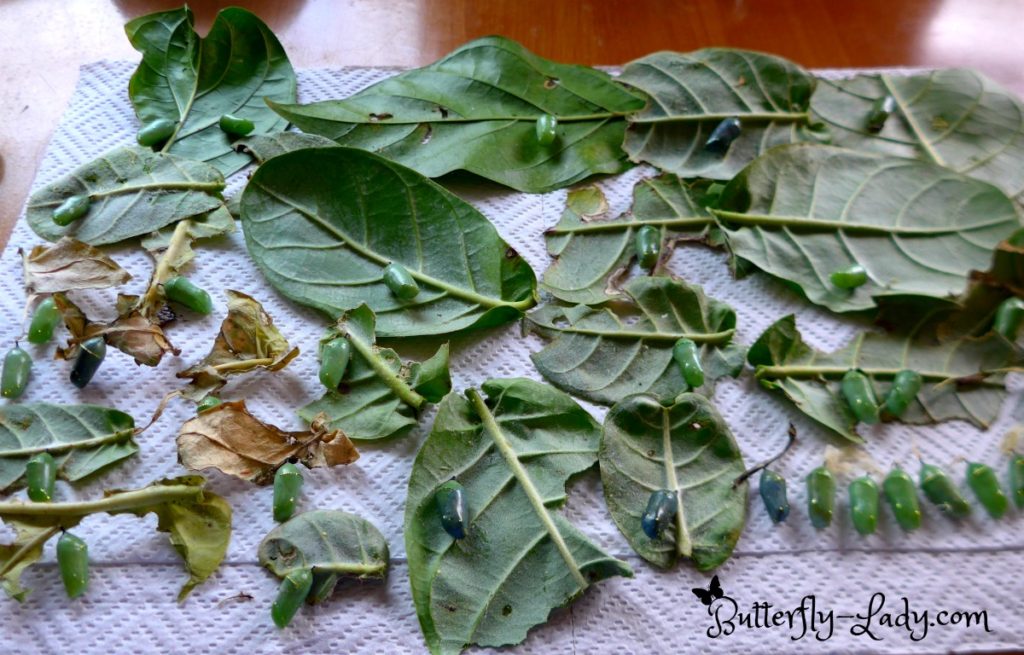
I collected what I was able to find and reach. I also cut some branches that still had leaves on them so I would have food for the dozens of caterpillars that I had collected.
Before long, the little boy came running down the street in his school uniform. He was so happy to see me. I gave him a few pa‘anga coins in exchange for my gleanings.
As I left to take my bounty of butterflies home, we were both smiling and waving like Queen Sālote in London. More than half a century separated us in age, the boy and me. We couldn’t speak each other’s language. But we were a pair of happy Tongan monarchs: he, the king of the magic money tree; I, the queen of butterflies.
“See you again soon, Your Royal Highness!”


